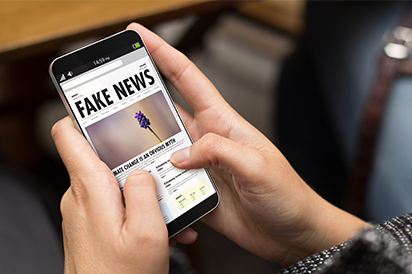As I have mentioned previously, this fall I prepared and taught a course titled “The Non-Partisan Voter’s Guide to Election Issues” for a local community college’s adult learner program.
The course was an attempt to help voters understand the background, context, and history of current issues so they could better assess what they were hearing during the campaigns.
I worked on this course for a couple of months and did a significant amount of research using credible and reliable sources that I was either already familiar with or that I discovered in the course of my work. I fact-checked everything and I read a couple of books to refresh my memory of the Trump administration (2017-2021). (Spoiler alert, it was worse than I remembered.)
By the end, one thing stood out.
Accurate information is not that hard to find.
I spent a lot of time checking multiple sources and confirming everything, but in the end, lots of organizations and people have been reporting the truth about these issues all along.
I didn’t have any secret password or a magic computer. You don’t need a special search engine or a security clearance to find out the truth about immigration, crime, election security, or inflation. You need an open mind, some basic research skills (which you can develop yourself with a little practice), some time, and an active interest in finding out the truth.
If you want to reduce your own susceptibility to disinformation there are three key things you must do:
- Be skeptical. Never take the word of a single source as truth.
- Never believe anything you see on social media.
- Fact-check everything you read and write.
There are a number of reliable fact-checking sites. Use them.
You can fact-check questionable statements yourself, but these sites have already done it and they explain their methodology and their sources.
There are also media bias charts, to identify the partisan leanings and accuracy of various media platforms. Simply search for ‘media bias charts’ on any search engine.
The best thing about fact-checking sites and media bias charts is that in each case there are more than one. You can compare their responses to see which seems more reliable to you.
Here are some additional suggestions from a League of Women Voters website:
How to Spot Misinformation and Disinformation
• Consider the source: Who’s sharing this information? Does the URL look strange? (For example, an “.edu” domain followed by “.co” or “lo” is often a fake site.) Check the About page for verifiable information. Is there evidence of partisanship or bias
• Check the date
• Cross-check: Check trustworthy, reliable news sources to see if they are reporting the same information
• Read past the headline: You know how tabloids post scandalous headlines and follow them with articles that are relatively mundane? Unfortunately, political outlets do that too
• Question emotionally charged content: Is the person or post using emotionally manipulative language? That’s a red flag. Reliable sources let the facts influence your response, not emotional language
We should also be aware of our own biases. The way we perceive information is affected by our own experiences, expectations, and preferences. Learn about cognitive biases and how they can affect your assessment of new information. Common cognitive biases include:
- Confirmation Bias
- Hindsight Bias
- Anchoring Bias
- Misinformation Effect
- Actor-Observer Bias
- False Consensus Effect
- Halo Effect
- Self-Serving Bias
- Availability Heuristic
- Optimism Bias
And always keep in mind that correlation is not causation
If you just keep this in mind you will inoculate yourself against a vast array of disinformation being disseminated during this election season.
Here are some additional suggestions for navigating the internet by Isaac Saul (Tangle).
October 27, 2024
image: https://business.uq.edu.au/momentum/navigating-fake-news
